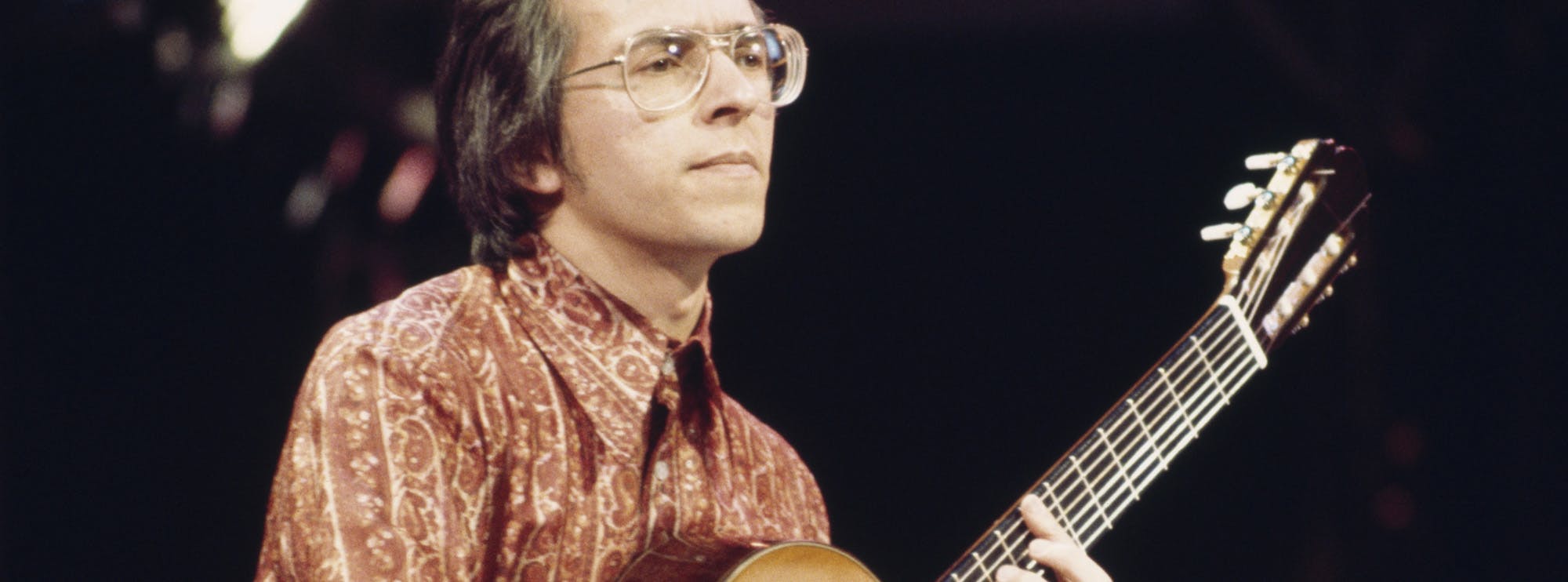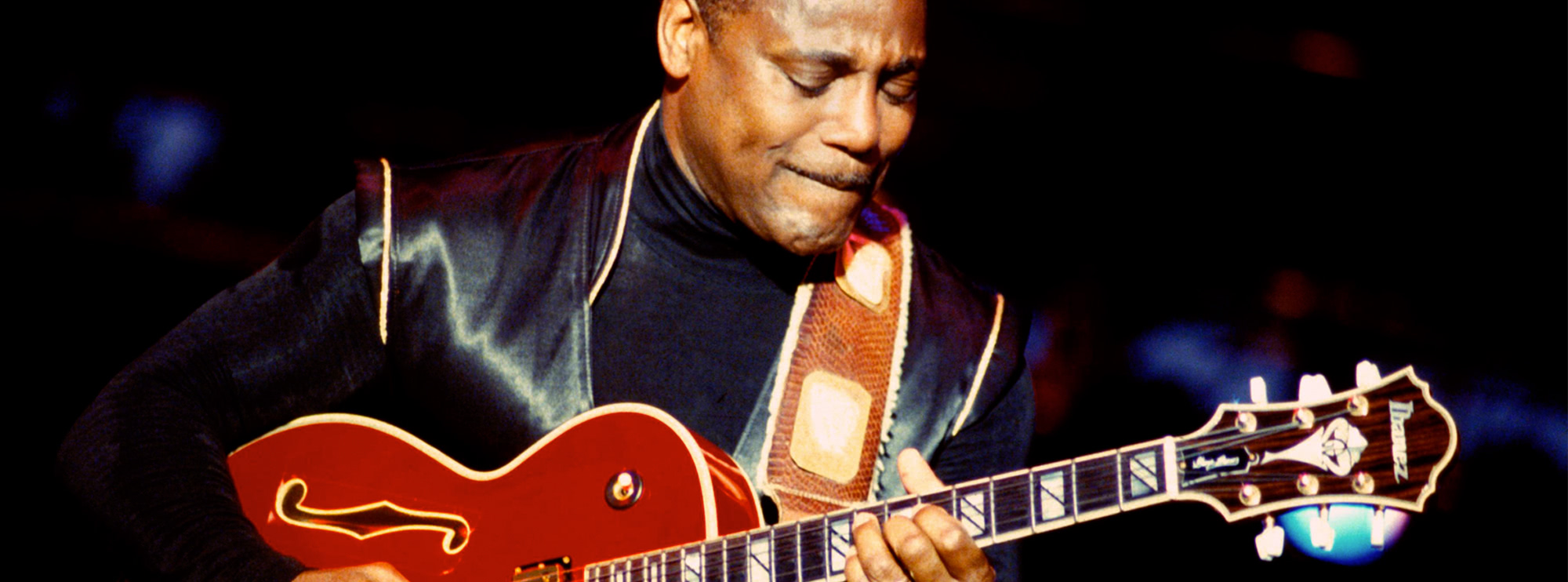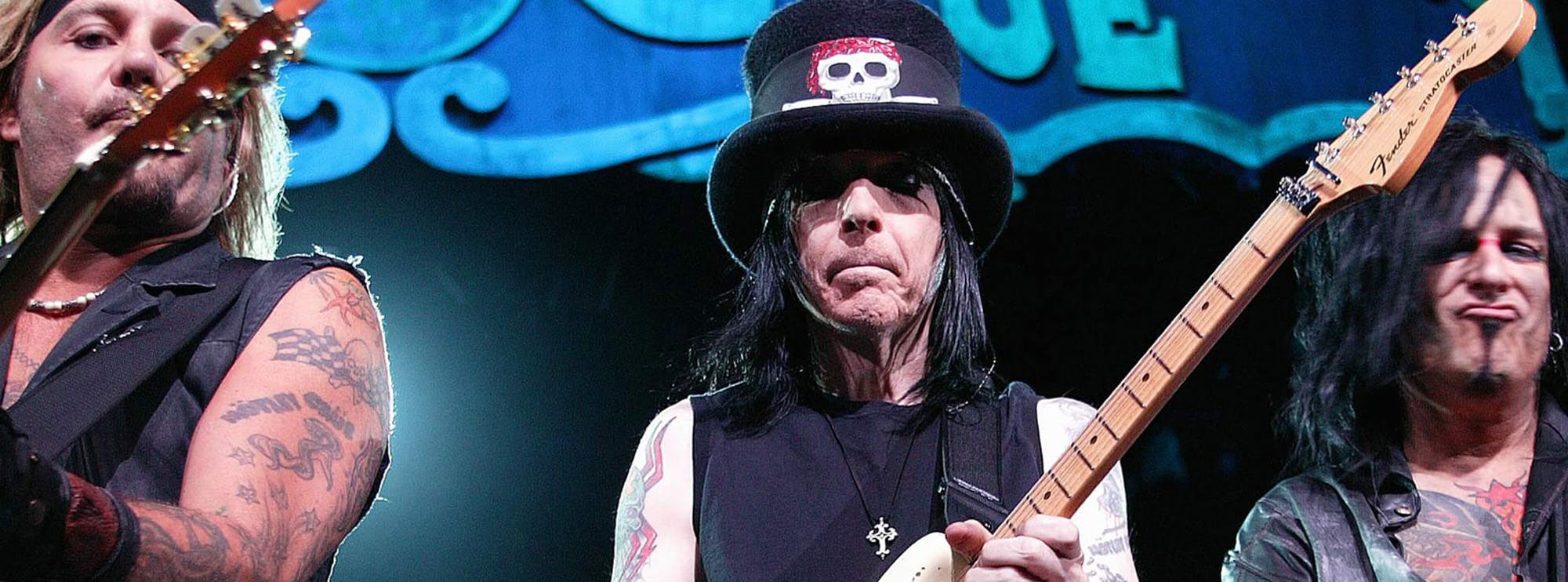Consisting of guitarist and main songwriter Tony Iommi, bassist Geezer Butler, drummer Bill Ward and vocalist Ozzy Osbourne, Black Sabbath started as a psychedelic band named "Earth". Despite their best efforts and Iommi's blues and folk rock pedigree (having toured with a number of successful acts, including a brief stint in Jethro Tull), Earth was a flop.
Studying Iommi's style is a great opportunity to work on tightening up your heavy riffing, because rhythmic accuracy is crucial to sounding authentic
Nick Jennison
Serendipitously, a cinema across the street from the band's rehearsal space was enjoying considerable success showing horror movies. Geezer Butler noted that it was "strange that people spend so much money to see scary movies", and that maybe if the band started playing "scary music" more people would come to watch them. The band renamed themselves after the cinema's main feature - the 1963 Boris Karloff horror classic Black Sabbath - and the rest is history. Guitar Lesson by Nick Jennison
General guidance for this Tony Iommi guitar lesson:
Studying Iommi's guitar style is a great opportunity to work on tightening up your metal guitar riffing, because rhythmic accuracy is crucial to sounding authentic. Listen closely to almost any early Black Sabbath track, and you'll notice that Tony Iommi's massive old school metal guitar riffs are the tonal and rhythmic anchor amidst the frenetic (occasionally chaotic) grooves of Butler and Ward. This is pretty much the polar opposite to contemporaries Led Zeppelin, with Bonham and Jones's tight rhythms underpinning Jimmy Page's loose swagger, but it's no less impactful.
It's worth noting that, despite the immense weight of his tones, Tony Iommi's touch is light and controlled. Suffering an industrial injury which severed the tips of his 2nd and 3rd fingers, Iommi compensated by tuning his guitar down and switching to lighter strings, which necessitates a more measured pick attack - it also goes to show that you don't need big strings for big tones! Speaking of which .....
Tone:
In the pursuit of authenticity, we used the classic Tony Iommi guitar setup of a Gibson SG plugged into a cranked Laney amp - in this case, the LA30BL, which shares a lineage with the Supergroup heads used by Tony throughout his career. We tried a number of boosts and fuzzes and settled on a Gamechanger Audio Plasma Pedal, which sounded suitably rough and ominous. In reality, though, any guitar with two humbuckers will do the trick, especially if you plug it into a vintage-style British amp. You might consider using a fuzz or a Rangemaster-style treble boost (such as Laney's TI Boost), but it's not completely necessary.
One thing worth noting is that there's not a massive amount of bass in Iommi's tone - in fact, I rolled the bass to zero on our Laney head. This lets the growling midrange speak more clearly, and leaves plenty of room for the rhythm section.
As far as guitar settings go, it's the bridge pickup with volume and tone up full for the majority of this session, but for the cleaner passages I switched to the neck pickup with the volume already rolled back - a clever way of getting your single-channel amp to behave like a channel switching model simply by using your guitar's controls.
Bars 1-4:
This first riff makes use of two classic Sabbath ideas: sliding power chords and tritone riffs. The latter, sometimes referred to as diabolus in musica, (Latin for "the devil in music") is a very sinister sounding interval found three whole tones (or six frets) above the root note - hence "tri-tone". This device is heard in so many of Iommi's riffs, especially the intro to "Black Sabbath."
You'll need to barre across the E and A strings on the 12th fret to make the pull-offs work. Also, when you're executing the trill in bar 4, try starting slowly and increasing the speed gradually.
Bars 5-12:
This riff is a tip of the hat to one of my favourite Sabbath riffs, "Sabbath Bloody Sabbath," and makes use of sliding power chords and play muted open string chugs. The palm mutes aren't as heavily muted as the ones you'll find in more modern metal styles - rather, they're a gentle dampening to create a darker texture to contrast the chord stabs.
There's a tricky little fill in bar 10 that introduces a "rudiment" you'll see crop up fairly often in this session - it's two hammer-ons between fingers 1 and 3, followed by a "grace note" hammer-on using the same fingers. Spend a bit of time getting this fill right, and you'll find that a lot of the trickier ideas in this session feel easier than you'd expect.
Bars 13-16:
An alternate riff, taking inspiration from "Iron Man." It moves us momentarily to the key of B, with a chromatic figure is derived from the B blues scale (with the addition of an A# note). Notice we have another grace note hammer-on on the A string.
Bars 17-24:
This cleaner section draws on Iommi's jazzier stylings in "Sabbath Bloody Sabbath" and "Planet Caravan," alternating between strummed major and minor 7th chords and melodic phrases. If you're using a guitar with an SG-style control layout, flip to the neck pickup with the volume rolled back to clean up the tone - or just switch to a clean sound.
The sliding octaves are a little tricky, making use of the less common 3-fret shape. The best way to deal with this shape is to fix your hand into position and focus on the positioning of either the first or fourth finger - the other finger will take care of itself
Bars 25-26:
Another Sabbath Bloody Sabbath-inspired riff here (I did say it's one of my favourites!), making use of low inverted power chords for a dark and grinding effect. There are a number of fingering possibilities for this riff - I prefer to use a first finger barre for the 2nd fret notes and use both third and fourth fingers together for the rest, but feel free to experiment. Getting the palm mute just right and releasing it at just the right time is crucial to making this riff work.
Bars 27-30:
This riff showcases a "parallel keys" approach used in tracks like War Pigs: taking a riff (in this case using the notes of the minor pentatonic scale) and moving it around the fretboard without making changing the fingering pattern (or the interval relationship) to match the original key. The effect is a little jarring, and very in keeping with the sinister vibe we're going for.
Also, notice that the "hammer-on/grace note" rudiment from bar 10 is back? This is an example of how one musical phrase can be repurposed to create a variety of interesting riffs and ideas.
Bars 31-34:
An ascending lead line inspired by "War Pigs" which is fairly simple to execute, but requires a little attention to the finer details. For maximum authenticity, your vibrato should be shallow and fast without sacrificing evenness. In terms of note choice, we're drawing from a hexatonic minor scale, made up of the minor pentatonic scale with the addition of a natural 2nd (in this case an F#). This scale has a lot of the drama of a full seven-note minor scale, but with a slightly more open and spacious sound. It's also somewhat reminiscent of one of Iommi's formative influences, Hank Marvin of The Shadows.
Bars 35-36:
Solo time! Our first lick makes use of that now familiar rudiment from bar 10, followed by some bends from the root note of E up to F# - effectively superimposing the B minor pentatonic scale over our home key of E minor.
Take care with the "contour" of these bends. Iommi makes use of a variety of bending approaches to add interest to his solos, and the best way to get it right is by listening closely. The bends in this first lick are "pre-bends", which involves bending the note to pitch before it's picked, before releasing it.
Bars 37-38:
We're drawing from Iommi's blues vocabulary for this E minor pentatonic lick. The timing can be a little tricky on the faster flourishes in bar 38 - focus on landing the 14th fret bend on time, and you should be ok.
Bars 39-40:
This lick is a tip of the hat to the solo from "Paranoid" - one of Iommi's best. It starts out with a series of bends before transitioning into a sequencing idea that cascades across the top four strings. Many of Iommi's faster lines are composed of sequences like this, and they serve to help the player and the listener "make sense" of these quick flourishes.
Bars 41-42:
The last lick of our solo, making use of bends to the natural 2nd one more time. There's also one more instance of the "hammer-on/grace note" rudiment - which just goes to show how many times you can afford to repeat the same phrase without sounding "predictable".
The very last phrase makes use of some bluesy double stops, with a first finger barre on the 12th fret of the G and B strings.
Bars 43-54:
A few bars of silence, before we hit one of Iommi's most iconic "tricks": a behind-the-nut bend on the open low E string, as heard in the droning intro to Iron Man. It's pretty simple to execute - hit the low E string nice and hard, and then push the string behind the nut towards the surface of the headstock firmly enough to make the bend happen.
Bars 55-58:
This triplet riff is inspired by "Children Of The Grave," and is deceptively tricky. The first challenge is getting the A and D strings to ring out without the low E dominating the sound. You can do this by slightly angling your pick strokes, so they just graze the low E while making firm contact with the A and D strings.
The second challenge is the timing of the hammer-ons. The first one is a grace note, while the second is part of a group of triplets. You might think of it as "bLA-da da-da BA-da-da da-da".
Bars 59-66:
Another Shadows-inspired melodic phrase, making use of two octaves of the hexatonic minor scale from bars 31-34. You're free to use whatever fingering feels comfortable with this one.
Bars 67-75:
A series of unison bends bring this track to a close. Rather than counting each bend (there are 33 in total), it's better to listen to the drums for your cue to finish - you'll hear a big roll on the snare drum signalling that the track is about to close.
In case you're new to unison bends, the idea is that you'll be bending a note on one string (in this case, the 15th fret on the B string) to match the pitch of a fretted note on the next string up (12th fret on the high E). Don't worry about matching the pitch to the cent - it's the "beating" sound between the two notes that gives these bends their "crackling" character.
So with that, we've reached the end of this session. I hope you've enjoyed this exploration of Tony Iommi's playing and songwriting style, and hopefully, you've picked up a few ideas to use in your own songs and solos. See you next time!
About The Tutor
Tutor Profile
Nick Jennison
I’m Nick Jennison, a guitarist, vocalist, producer and educator from the North East of England. It’s pretty cold up here, which seems like the perfect excuse to stay inside and make a bunch of great guitar-related videos for your viewing pleasure. I’ll be covering topics from technique, tone and musicality,...



